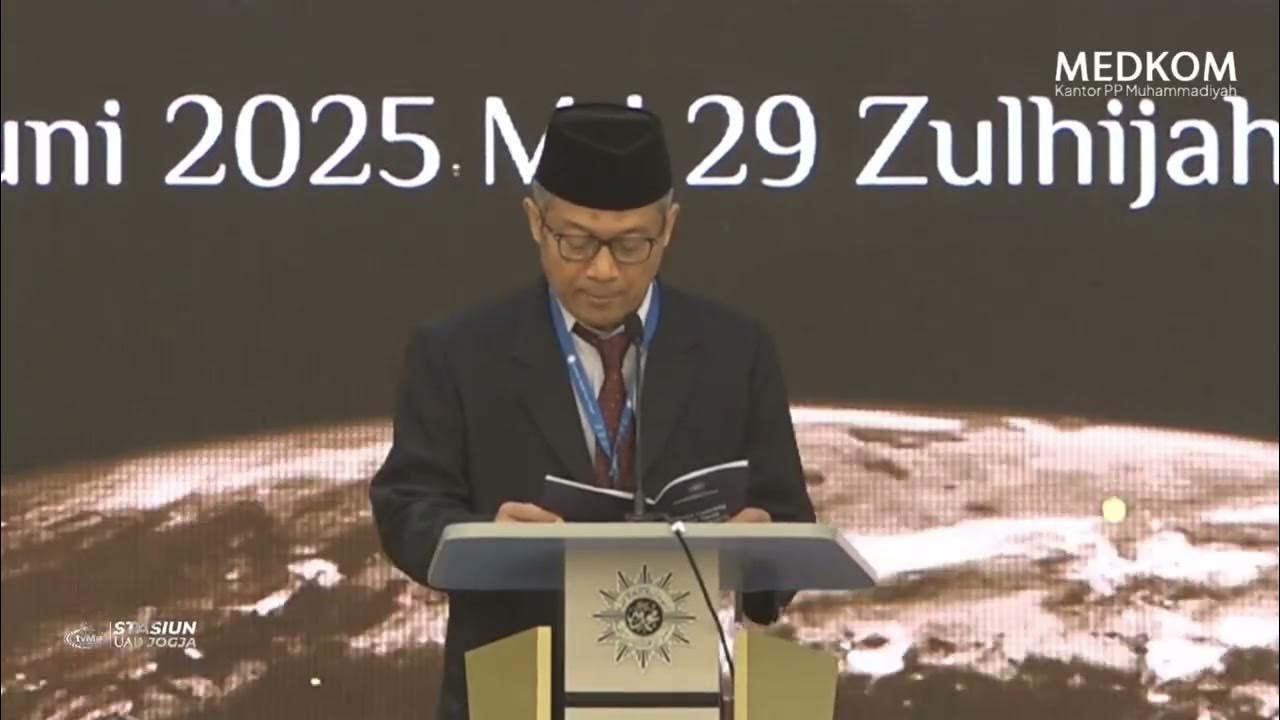Gerakan Pembaharuan Islam
Summary
TLDRThe transcript explores the concept of 'tajdid' (Islamic renewal), emphasizing that reform in Islam is not about changing core principles but about interpreting them to meet contemporary needs. It highlights the emergence of Islamic reform movements in the 18th century, influenced by Western intellectual and political contact. Reformist thinkers like al-Afghani and Muhammad Abduh played key roles in advocating for a return to pure Islamic teachings while addressing the stagnation within the Muslim world. The movement aimed to modernize Islamic society without compromising its fundamental doctrines.
Takeaways
- 😀 The term 'tajdid' in Islam means 'renewal', and those who perform it are called 'Mujadid'.
- 😀 Islamic renewal is about reviving faith and practices within the Muslim community, not altering the core principles or values of Islam.
- 😀 The focus of Islamic renewal is on interpretation of basic teachings to address contemporary social needs, not changing Islamic doctrine.
- 😀 The term 'renewal' in Islam gained popularity in the 18th century due to intellectual and political interactions with the West.
- 😀 The context of Islamic renewal in education arose from the social and religious challenges in 19th-century Egypt, marked by stagnation and rigidity.
- 😀 Prominent thinkers like Al-Afghani and Muhammad Abduh emphasized the lack of intellectual freedom as a cause of the stagnation of Muslim societies.
- 😀 A key motivation for Islamic renewal was the direct contact between Muslim Ottoman societies and Christian European societies during the 18th century.
- 😀 The rise of European civilization prompted concerns in the Muslim world about the advancement of Western knowledge and the subsequent decline of Islamic civilization.
- 😀 The need for renewal was driven by the perceived threat of European progress, prompting Islamic leaders to advocate for reform in Islamic thought and practice.
- 😀 The movement of Islamic renewal aimed to return to the pure teachings of Islam and emphasized the importance of knowledge, science, and philosophy as part of modernization efforts.
Q & A
What is the literal meaning of the term 'tajdid' in Islamic vocabulary?
-The term 'tajdid' literally means 'renewal' in Islamic vocabulary.
What does the term 'mujadid' refer to in Islam?
-The term 'mujadid' refers to the person who carries out the process of renewal in Islam.
What does Islamic renewal focus on, according to the script?
-Islamic renewal focuses on reviving faith and its practices within the Muslim community, without altering the foundational teachings or principles of Islam.
What is not the goal of Islamic renewal?
-The goal of Islamic renewal is not to change, modify, or revise the core values and principles of Islam to fit modern tastes, but to interpret them in a way that aligns with the changing needs of society.
When did the concept of Islamic renewal gain significant prominence?
-The concept of Islamic renewal gained significant prominence in the 18th century, following political and intellectual contact with the West.
What were the social and religious conditions in Egypt that contributed to the rise of Islamic renewal?
-In Egypt, the social and religious environment was marked by stagnation, with rigid traditions and a lack of intellectual freedom, which spurred figures like Al-Afghani and Muhammad Abduh to advocate for renewal.
What did Al-Afghani and Muhammad Abduh believe caused the decline of the Muslim community?
-They believed the decline of the Muslim community was caused by the loss of intellectual traditions, particularly the lack of freedom of thought.
What was the role of the Ottoman Empire in the context of Islamic renewal?
-The Ottoman Empire, as a gateway to Europe, had the most direct exposure to the developments in the West, which influenced the Muslim community's awareness of the advancements in Europe.
What did the contact between Muslim communities and the West lead to, according to the script?
-The contact between Muslim communities and the West led to the realization that Islam needed reform, and progressive Muslims argued that Islam was in a period of darkness, while the modern era (post-1800) represented a potential revival for the Muslim world.
What were the factors driving the Islamic reform movement?
-The driving factors for the Islamic reform movement included dissatisfaction with Western domination, the failure of capitalist and socialist systems, and the elitist secular lifestyle in Muslim countries.
Outlines

This section is available to paid users only. Please upgrade to access this part.
Upgrade NowMindmap

This section is available to paid users only. Please upgrade to access this part.
Upgrade NowKeywords

This section is available to paid users only. Please upgrade to access this part.
Upgrade NowHighlights

This section is available to paid users only. Please upgrade to access this part.
Upgrade NowTranscripts

This section is available to paid users only. Please upgrade to access this part.
Upgrade NowBrowse More Related Video

Kemuhammadiyahan : Identitas Muhammadiyah

Kenapa Muhammadiyah Tidak Bermadzhab? - Ust. Aly Aulia, Lc, M.Hum | Putusan Tarjih Muhammadiyah

Kuliah AIK 3 [2] Identitas Gerakan Persyarikatan Muhammadiyah

Jika Meninggalkan Shalat, apakah harus diQodho? - Ustadz Adi Hidayat

Day 47: Do You Own Your Muslim Identity? | Sheikh Mohammed Al-Hilli

TERBARU! Penjelasan Lengkap Tentang KHGT | Ustadz Hamim Ilyas
5.0 / 5 (0 votes)